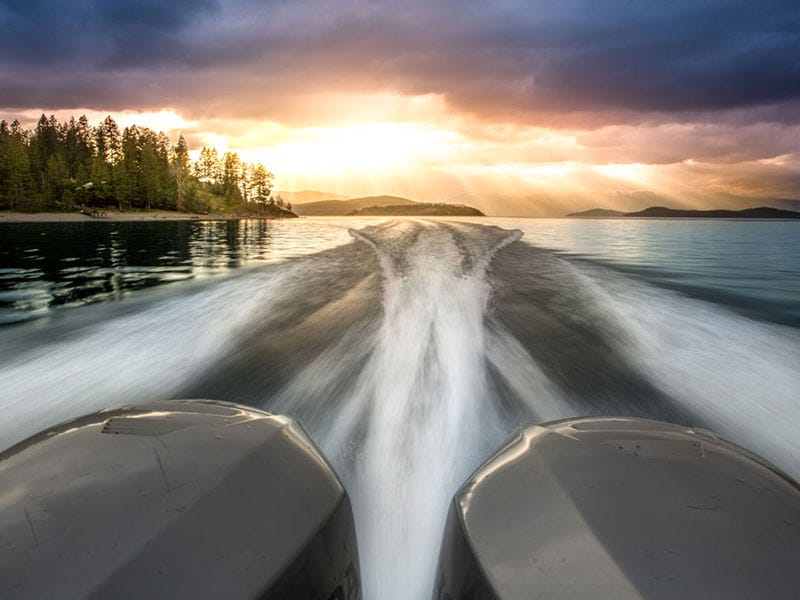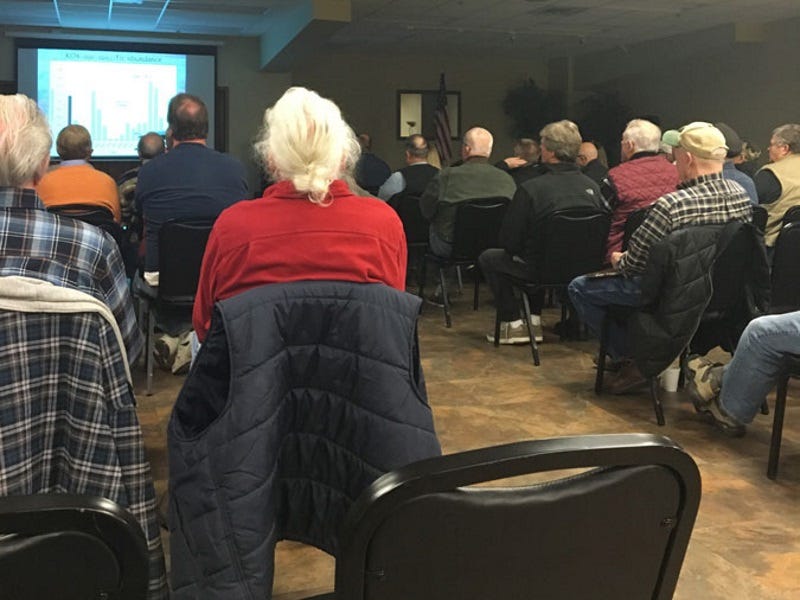Lake Pend O'reille State of the Lake 2016


Last Thursday, the Idaho Department of Fish and Game had a public meeting at the Ponderay Event Center for any interested fisherman concerned about the current state of Lake Pend O'reille. It was an extremely informative gathering that allowed the public to stay updated with projects Fish and Game are conducting on the lake. The IDFG touched on important topics like effects of lake trout suppression, species numbers, kokanee spawning habitat improvement, and invasive species. It was difficult for me to absorb all of the information simply because there was tons of it being presented with each new slide from the slideshow. Here are the facts that I took away from this informative meeting.
Improvements in the Fishery and Harvest Numbers
In 2014, 200,000 hours were spent fishing on Lake Pend O'reille by all anglers with a resulting 236,419 fish harvested. These may be large numbers, but it doesn't compare to the estimated 523,000 hours in 1953 and 1,431,000 fish harvested in 1953. Of these fish harvested in 2014, 154,978 were kokanee, and 5,688 were rainbows.
In 2015, the rate of fish caught by one single angler per hour was 4/hr for Kokanee, 1.92/hr for warm water species, .83/hr for Cutthroat trout, .46/hr for Lake trout, .44/hr for Rainbows, .37/hr for Walleye, .28/hr for Brown trout, and less than .01 for Whitefish. These numbers were gathered by the IDFG through asking fisherman what they are targeting, and how many they caught.
The IDFG are continuing their efforts of restoring kokanee populations through improving spawning habitat, and stocking 10 million kokanee. Thousands of kokanee used the prime spawning habitat created by IDFG in 2014 and 2015. As a result, the kokanee population is strong, and we should see another great season of kokanee fishing on the lake. IDFG's goal is to reach an average kokanee harvesting average of 300,000 annually.
Lake Trout Suppression and Gerrard Rainbows
Lake Trout suppression has proven effective over the recent years. Between the $15 bounty per Lake Trout head, spawning research, and gill nets, a total of 189,172 lake trout have been removed from Lake Pend O'reille since 2009. IDFG are now using smaller mesh gill net holes that are less than two inches. This will result in catching the younger lake trout class that were able to slip through the nets in the past. The Lake Trout suppression program has costed 6.5 million over 10 years.
IDFG are unable to stock pure Gerrard Rainbows this year in the lake. Studies have found that Gerrard rainbows grow in length and not in girth until they reach the right size to where they can start eating kokanee. This is why some young rainbows seem to be long and skinny. The growth of inches on rainbows has been the same as it has been over the years. Meaning that the rainbows are not getting bigger faster than they have been in the past. The Mysid Shrimp are a fraction of their historic average, but still better than the crash in 2013. Catch and release for rainbows during the spawn have proven to not have any effect on the overall population of Gerrards. IDFG have found this to be true through studying our fishery and fisheries like ours.
Due to studies done through gill netting throughout the entire lake, cutthroat populations seem to be greater on the south end of the lake.
Bull trout populations have slightly decreased over the past year, but still remain normal and stable. There are estimated 10,000 bull trout throughout the lake.
Aquatic Invasive Species in Lake Pend O'reille and What to Do
Aquatic invasive species is still a serious issue to everyone who loves our lake, and wishes to continue to enjoy what it offers. There are many invasive species that have been moving around the nation, but none scare us more than Quagga and Zebra muscles. These species devour the base of the aquatic food chain and will attach to literally everything. If you are traveling with your boat to any lake, please make sure to stop at all the boat check stations. Twenty-five boats were found this past year with zebra muscles attached to them. Three of those boats were heading to Lake Pend O'reille. Luckily, they were stopped and quarantined before they could utilize our public boat ramps.
How to stop the spread of Aquatic invasive species
-
Stop at designated check stations
-
Drain all water from your boat before you leave an area
-
Wash your boat with hot water
-
Tell your friends about! (Costs a lot of money to remove invasive species)
-
Report any suspect boats
-
Rent a boat if visiting an area
-
Do not dump your aquarium into the lake
Again, I was unable to absorb all of the information available. This is just what I was able to quickly write down. I encourage anyone interested in learning more about Lake Pend Oreille to stay current with Idaho Fish and Game and what they are trying to accomplish. After all, they are there to improve our fishery and conserve its ecosystem.
We love fishing for Browns as well! As far as your area goes, Browns can be found in the Clark Fork, Lake Pend Oreille, and The Pend Oreille River. In my opinion, Lake Pend Oreille is greatly underrated when it comes to Brown Trout. They are significantly under fished because most fisherman love targeting the giant rainbows. Honestly, who could blame them. Browns can be found throughout the entire lake including Sandpoint. Just last month, a little girl with a barbie fishing rod and a worm caught a 7 lb Brown trout off of City Beach. We have a larger population of Cutthroat, but it is not uncommon to run into a few Browns when out fishing.
Hope you hook into some hogs!
thanks,
Steve
